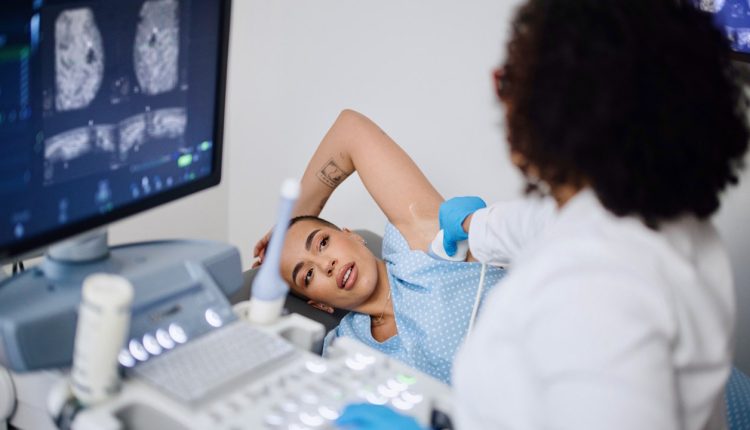Breast cancer is the second-most diagnosed cancer among women, second to skin cancer.
One in eight woman are diagnosed with the disease in their lifetimes.
There are five stages of breast cancer that an individual can be diagnosed with, starting at 0 and escalating to IV.
DON’T WAIT UNTIL YOU SEE SYMPTOMS TO GET SCREENED FOR BREAST CANCER
Within those stages, there are various substages.
Below are the different stages of breast cancer, also broken down into various types and the survival rates for each of those stages.
- How is the stage of breast cancer determined?
- What are the five stages of breast cancer?
- What are the survival rates for each stage of breast cancer?
1. How is the stage of breast cancer determined?
The stage of breast cancer is determined using the TNM scale.
“T” refers to the size of the tumor found, measured in centimeters and if it has spread to other areas of the body. The “N” stands for the number of nearby lymph nodes where cancer is found, and the “M” refers to whether or not the cancer is metastasized — in other words, whether it’s spread to other organs of the body outside the breast.
2. What are the five stages of breast cancer?
There are five stages of breast cancer starting with 0, and then moving to I, II, III and IV.
5 COMMON MYTHS AND MISCONCEPTIONS ABOUT BREAST CANCER, ACCORDING TO A DOCTOR
The higher the stage, the more the cancer has spread. The stage is determined at the time of diagnosis.
Stage 0
The lowest stage of breast cancer is stage 0. This is used to describe a non-invasive stage of the cancer.
At this point, there is no evidence that the cancer has spread to any of the surrounding tissue.
Stage I
Stage I is an invasive form of breast cancer that is broken down into two types, stage IA and stage IB.
In stage IA, the tumor is small, no larger than two centimeters, and the cancer has not spread outside the breast.
There is no cancer in the lymph nodes at this point.
In stage IB, there is a tumor in the breast less than two centimeters, with additional cancer cells in the lymph nodes or no tumor in the breast and cancer cells in the lymph nodes.
Stage II
Similar to stage I, there are also two types of cancer present in stage II. To be classified as stage IIA, there could be no tumor in the breast, but cancer has spread to nearby lymph nodes.
Stage IIB generally means that there is a tumor present between two and five centimeters, with breast cancer cells found in the lymph notes. This type could also be diagnosed if the tumor is greater than five centimeters, but the lymph nodes have not been effected.
Stage III
Stage III of breast cancer is broken down into three different stages.
In stage IIIA, the tumor may or may not be in the breast, but the cancer is present in four to nine nearby lymph nodes. Another way to be diagnosed with this stage is if the tumor is larger than five centimeters and there are breast cancer cells found in one to three lymph nodes.
In stage IIIB, the tumor has spread farther. This could mean that the cancer could have spread to the skin and may have spread to up to nine underarm lymph notes or lymph nodes located near the breastbone.
In stage IIIC, there could be no cancer in the breast. If there is a tumor in this stage, it could measure to any size. Additionally, the cancer in this stage has spread to either ten or more underarm lymph nodes, lymph nodes located near the collarbone or lymph nodes near the breastbone.
Stage IV
Stage IV is the last stage of breast cancer.
At this stage, the cancer has spread beyond the breast and possibly to other organs like the lungs, bones, liver or brain.
3. What are the survival rates for each stage of breast cancer?
The American Cancer Society outlined the five-year relative survival rates for breast cancer broken up into localized, regional and distant stages.
In a localized stage, there is no sign of cancer outside the breast.
In the regional size, the cancer has spread outside the breast, but is limited to nearby areas or lymph nodes.
Lastly, in the distant stage, the cancer has spread to other parts of the body.
The American Cancer Society put out numbers based on the time period of 2012 and 2018.
The five-year relative survival rate for women diagnosed with localized cancer was 99%.
The survival rate for regional stages of breast cancer was 86%.
For distant, the percentage drops to 30%.
For more Lifestyle articles, visit www.foxnews.com/lifestyle.
Read the full article here

